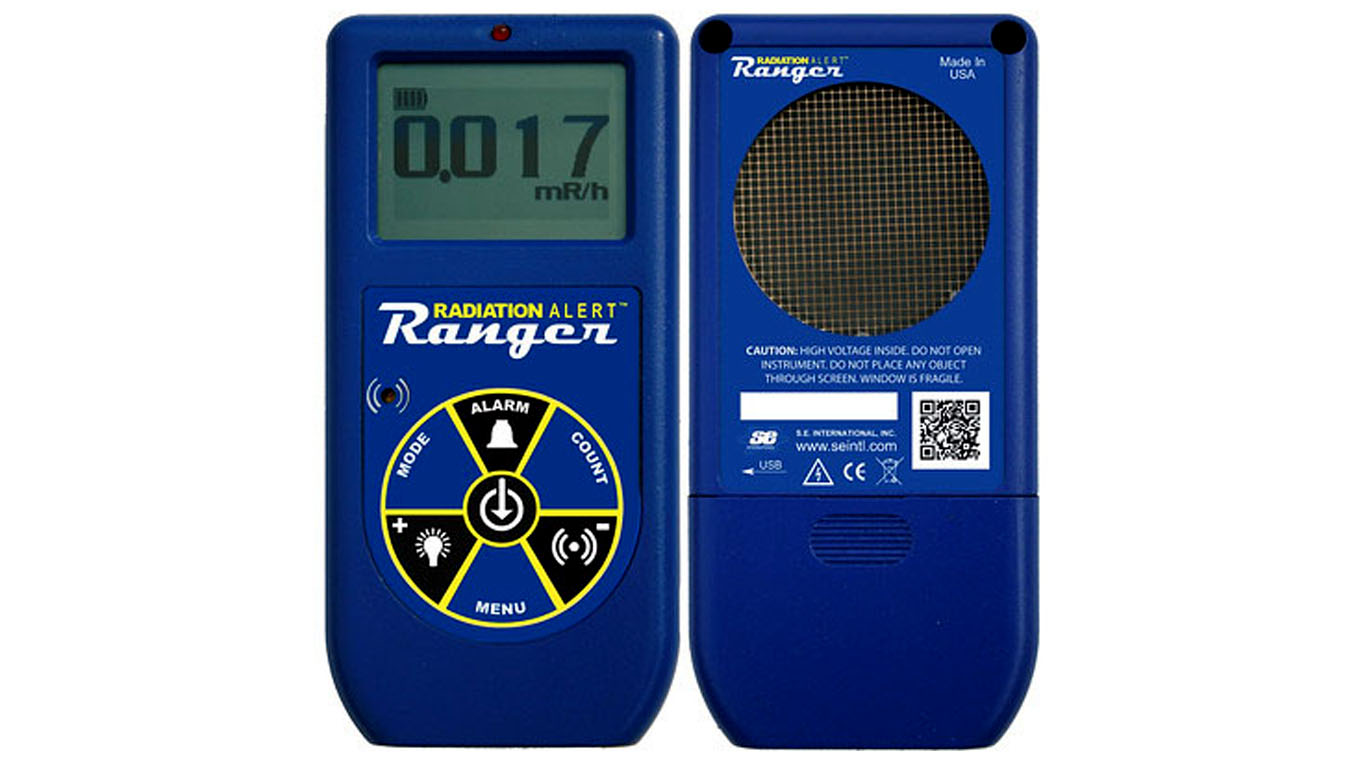A Geiger Counter, also known as a Geiger-Mueller tube, is a device used to detect radioactive radiation by passing radioactive elements through a chamber of inert gas within the device, which ionizes the gas, allowing the device to easily detect radioactivity.
History of the Geiger Counter
This device was developed by German physicist Hans Geiger in 1912 while working with Ernest Rutherford, the physicist who won the 1908 Nobel Prize in chemistry for developing the concept that an atom contains a nucleus composed of even smaller particles. He, essentially, is the physicist who discovered there is an atomic nucleus when an atom is split. The two physicists worked together to develop a radiation measuring device to detect the alpha particle.
Years later, Geiger teamed up with one of his Ph.D. students, Walter Müller, to perfect the counter so that it could also detect other forms of radiation in addition to the alpha particle. The technology of this device, which was created back in the early 1900s, utilizes the same technology today, in the same way. In the late 1920s, Müller received credit for his work with Geiger when he gave his name to the Geiger-Müller tube.
What is Radioactivity?
In order to better understand how Geiger counters work, understanding the process of radioactivity must come first.
According to the US Department of Energy, radioactivity is the releasing of energy from the decay of certain atoms and isotopes. Nuclei consist of protons and neutrons that are bound together in tiny bundles in the center of atoms. When nuclei are radioactive, they become unstable and decay. With this, they emit various energy particles (electrons, protons, photons, neutrons, alphas, and neutrinos). Some of these released particles are ionizing particles. Because these particles are ionized, they can pull electrons away from the molecules or atoms. Therefore, the level or amount of radioactivity that can be detected is dependent on the fraction of unstable nuclei and how often they decay.
This is when the Geiger Counter comes into effect for ionizing radiation detection.
How the Geiger Counter Works
How a Geiger Counter works is not as complex as the device itself looks. The Geiger Counter has two primary parts: a chamber filled with gas and an information monitor display. Once radiation enters the chamber filled with gas, the electrons are then pushed away from the gas atom, creating an ion pair. There is a thin, metal wire, typically made from tungsten, in the center of the tube. This wire is what attracts electrons, which then creates other ion pairs that send a current through the wire.
At this point in the Geiger Counter, the current goes to the information monitor display which shows the counts per minute of the number of ion pairs that are created every 60 seconds. The device will click every time an ion pair is created. The clicks you hear are an indicator of how much radiation is entering the Geiger Counter chamber.
There are several factors that can contribute to the fluctuation in counts per minute as well. Things like indoor ventilation, soil moisture, atmospheric conditions, and other factors. When using this device, it is important to remember that it is only meant to indicate when ion pairs are created, not the type of radiation detected or the amount of energy the ion pairs have.
Protection Against Radiation
We are exposed to radiation daily. Exposure to natural radiation comes from radioactive materials found in soil, water, and the air. Radon is a naturally occurring gas that is the main source of natural radiation exposure, at least from soil and rocks. This type of exposure is not life threatening nor does it pose a serious threat to your health.
We’re also exposed to synthetic sources of radiation. This type of exposure is largely due to certain industries we work in. Medical and dental offices, nuclear power plants, hospitals, air and space travel, manufacturing, and construction, and many more are all areas that can expose you to serious levels of radiation, which can be hazardous to your health.
Depending on the level of exposure and the length of time you have been exposed, you can experience health symptoms ranging from headaches and abnormal skin redness to tissue damage and various forms of cancer. Because of the health risks involved in radiation-exposed workplaces, the Geiger Counter is essential for not only protecting workers from radiation sources but also the public.
At S.E. International, we have a variety of Geiger Counters and other radiation detection devices and software to ensure your facility is safe. We understand that radiation exposure is unavoidable with certain industries. Our devices ensure your staff’s level of radiation exposure is acceptable. If you work in an industry where radiation exposure is a workplace hazard, contact S.E. International for your radiation detection products and services.
0






